<< Our Photo Pages >> Peinan Cultural Park - Ancient Village or Settlement in Taiwan
Submitted by Andy B on Thursday, 30 July 2009 Page Views: 16877
Multi-periodSite Name: Peinan Cultural Park Alternative Name: Peinan Site, Crescent shaped Stone Pillar, Pei-nanCountry: Taiwan
NOTE: This site is 24.316 km away from the location you searched for.
Type: Ancient Village or Settlement
Nearest Town: Taitung Nearest Village: Beinan (Pei-nan)
Latitude: 22.794224N Longitude: 121.116440E
Condition:
| 5 | Perfect |
| 4 | Almost Perfect |
| 3 | Reasonable but with some damage |
| 2 | Ruined but still recognisable as an ancient site |
| 1 | Pretty much destroyed, possibly visible as crop marks |
| 0 | No data. |
| -1 | Completely destroyed |
| 5 | Superb |
| 4 | Good |
| 3 | Ordinary |
| 2 | Not Good |
| 1 | Awful |
| 0 | No data. |
| 5 | Can be driven to, probably with disabled access |
| 4 | Short walk on a footpath |
| 3 | Requiring a bit more of a walk |
| 2 | A long walk |
| 1 | In the middle of nowhere, a nightmare to find |
| 0 | No data. |
| 5 | co-ordinates taken by GPS or official recorded co-ordinates |
| 4 | co-ordinates scaled from a detailed map |
| 3 | co-ordinates scaled from a bad map |
| 2 | co-ordinates of the nearest village |
| 1 | co-ordinates of the nearest town |
| 0 | no data |
Internal Links:
External Links:
Today, the Peinan site (Beinan site) is recognized as the largest and most intact Neolithic village of its kind in the Pacific Basin.
A team of salvage archaeologists from National Taiwan University (NTU) had only 400 days to excavate the site. Then, it took them a few decades to catalogue the rich remains. After locals protested to demand the return of their heritage, the relics were recently sent back in boxes and are now part of the Beinan Cultural Park and National Museum of Prehistory(NMP).
The modern Beinan archaeological site, where progress is slow in coming, with a dearth of archaeologists on the island.
With an annual budget of NT$200 million, a massive museum was constructed 5 kilometers from the site, so it wouldn’t be disturbed. The government also bought 20 hectares out of the 80 hectares estimated as the settlement’s size; 20 hectares were subsequently destroyed. Beinan covers a tract of rolling hills and a host of cinnamon, durian and other paradisiacal trees — a beautiful but largely unexcavated park. Farmers can only grow in the area; construction is forbidden. Only a few hectares have actually been unearthed, another indicator that what we know so far about Taiwan’s archaeology just scratches the surface.
What was this Neolithic town at Beinan, and what happened to it? Amis aboriginals believe the Beinan site is a sacred – some say cursed — resting place of their ancestors. Local creation myths of the Paiwan and subtribes involve mountain origins, coming from snakes or borne from a jug, rather than overseas.
Trista di Genova continues: I took part in an archaeological dig there, an NMP program run primarily for high school students, There was a lone placard, “Indigenous Legends about Beinan,” in the Beinan Culture Park museum that discussed the Beinan peoples’ origin. With the translation assistance of my 18-year-old “pit buddy” there are competing accounts in local folklore of what happened to the Beinan people, known as the “Lala ersa.”
The Puyuma tribe at Nanwang say two brothers were in a fight; the younger was kidnapped and abused while imprisoned. The elder used a kite to save his brother. The grandmother, who knew magic, taught the tricks of earthquakes. The house of Lala burned during earthquake and fire, left in ruins.
The Amis at Tavarong say that once, a girl was kidnapped by the Beinan people to become a bride. Her brother rescued her through the help of the Lala ersa. But fighting broke out and the Lala ersa were all killed.
Read the full article, with photos at The Wild East.
Link to Official Web Site for Peinan Cultural Park
Note: Trista di Genova writes about the prehistory of Taiwan, and how Taiwan plays a central role in the dispersal theory of Austronesian-speaking peoples into Southeast Asia.
You may be viewing yesterday's version of this page. To see the most up to date information please register for a free account.




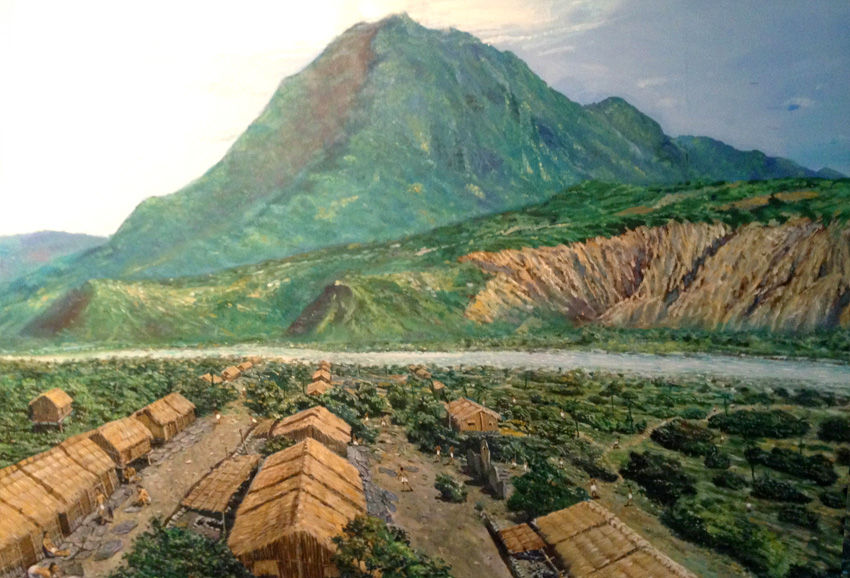




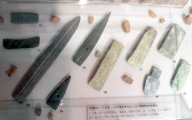







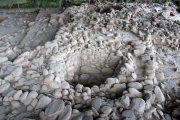
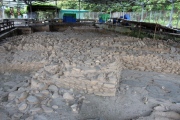

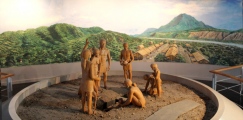


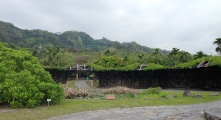
These are just the first 25 photos of Peinan Cultural Park. If you log in with a free user account you will be able to see our entire collection.
Do not use the above information on other web sites or publications without permission of the contributor.
Click here to see more info for this site
Nearby sites
Click here to view sites on an interactive map of the areaKey: Red: member's photo, Blue: 3rd party photo, Yellow: other image, Green: no photo - please go there and take one, Grey: site destroyed
Download sites to:
KML (Google Earth)
GPX (GPS waypoints)
CSV (Garmin/Navman)
CSV (Excel)
To unlock full downloads you need to sign up as a Contributory Member. Otherwise downloads are limited to 50 sites.
Turn off the page maps and other distractions
Nearby sites listing. In the following links * = Image available
526m ESE 115° Crescent Stone Pillar Taidong* Standing Stones
4.5km SSW 213° Taiwan National Museum of Prehistory* Museum
14.3km NE 44° Dulan Stone Wall* Standing Stones
14.6km NE 46° Dulan ruins* Rock Cut Tomb
26.6km SSW 207° The Jiu-Xiang-Lan Site* Cist
47.4km NE 37° Baishoulian Stone Coffin Rock Cut Tomb
71.5km SSW 202° Weeping Lake Site* Standing Stones
76.5km NNE 29° Baxiandong* Cave or Rock Shelter
79.2km NNE 18° Sabat Stone pillars* Standing Stones
90.7km NNW 335° Laiji Tsou ceremonial site* Carving
262.3km NE 45° Kubura Bari* Natural Stone / Erratic / Other Natural Feature
265.4km NE 46° Yonaguni Submarine Ruins* Natural Stone / Erratic / Other Natural Feature
267.1km NE 46° Ichitarai* Holy Well or Sacred Spring
267.8km NE 46° Ishigantō* Standing Stone (Menhir)
267.9km N 9° Yangmingshan Pyramid Pyramid / Mastaba
268.2km NE 46° Urano-bochi necropolis* Chambered Tomb
269.3km NE 46° DatikuChidi* Broch or Nuraghe
303.9km ENE 62° Nyū Kōto-muri* Broch or Nuraghe
304.2km ENE 62° Nabikakimasu* Broch or Nuraghe
304.8km ENE 62° Hota-muri* Broch or Nuraghe
305.5km ENE 62° Manjinuya-muri* Broch or Nuraghe
305.7km ENE 62° Hoshimi-ishi ? (in Hateruma-jima island)* Standing Stone (Menhir)
305.7km ENE 62° Kōto-muri* Broch or Nuraghe
306.3km ENE 62° Shimotabaru-jō* Hillfort
306.4km ENE 62° Katchin’nubuya-muri* Broch or Nuraghe
View more nearby sites and additional images


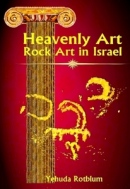
 We would like to know more about this location. Please feel free to add a brief description and any relevant information in your own language.
We would like to know more about this location. Please feel free to add a brief description and any relevant information in your own language. Wir möchten mehr über diese Stätte erfahren. Bitte zögern Sie nicht, eine kurze Beschreibung und relevante Informationen in Deutsch hinzuzufügen.
Wir möchten mehr über diese Stätte erfahren. Bitte zögern Sie nicht, eine kurze Beschreibung und relevante Informationen in Deutsch hinzuzufügen. Nous aimerions en savoir encore un peu sur les lieux. S'il vous plaît n'hesitez pas à ajouter une courte description et tous les renseignements pertinents dans votre propre langue.
Nous aimerions en savoir encore un peu sur les lieux. S'il vous plaît n'hesitez pas à ajouter une courte description et tous les renseignements pertinents dans votre propre langue. Quisieramos informarnos un poco más de las lugares. No dude en añadir una breve descripción y otros datos relevantes en su propio idioma.
Quisieramos informarnos un poco más de las lugares. No dude en añadir una breve descripción y otros datos relevantes en su propio idioma.